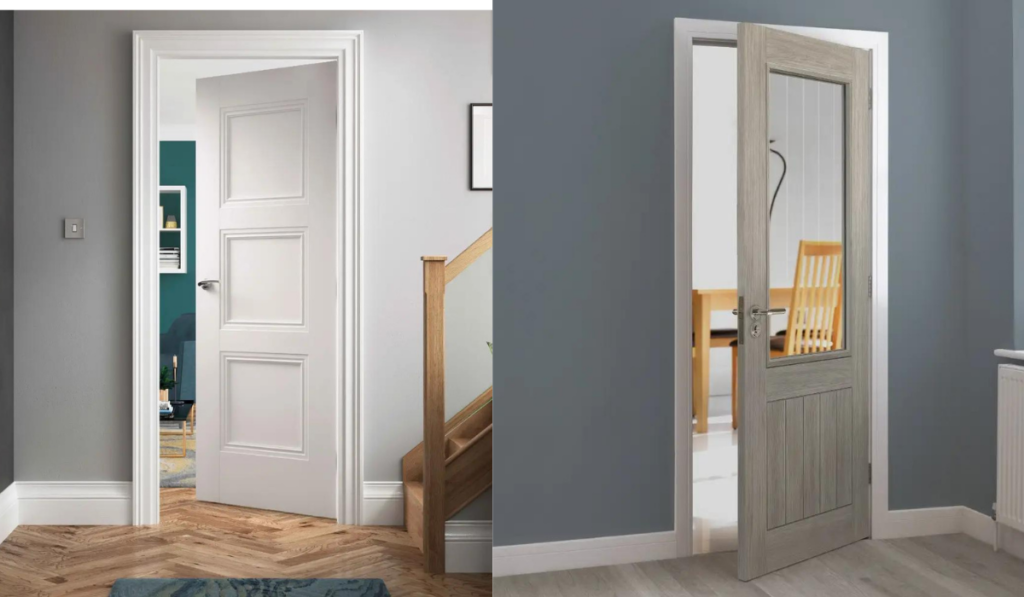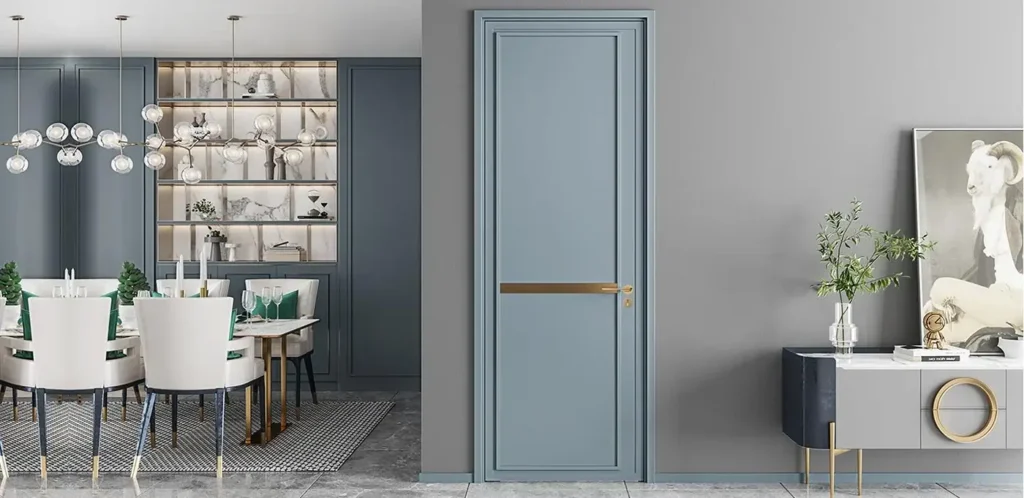The cost of interior doors can significantly impact your home renovation budget. Understanding the various factors that influence these costs is essential for making informed decisions. This article will explore the elements that affect interior door pricing, helping you choose the best options for your space.
Overview of Interior Doors
Interior doors are an essential part of a home’s structure, serving both functional and aesthetic purposes. The cost of interior doors varies widely based on materials, design, size, and installation requirements. Typically, these doors are made from wood, fiberglass, or hollow core materials, and they can come in various styles, from traditional to modern. Understanding the different types of doors available and their associated costs is crucial for homeowners looking to enhance their living spaces.
Key Features and Types of Interior Doors
When considering the cost of interior doors, it’s important to understand the different types available. Common types include:
Panel Doors: Made from solid wood or engineered wood, panel doors are known for their classic look and durability. They often come with multiple panels that can be customized.
Flush Doors: These are flat and typically made from plywood or MDF. They are a budget-friendly option and are often used in modern designs.
French Doors: Featuring glass panels, French doors are ideal for creating a sense of openness and can be more expensive due to their design complexity.
Bi-fold Doors: Perfect for closets or as room dividers, bi-fold doors save space and add an interesting architectural element to a room.
Benefits and Importance of Choosing the Right Interior Door
Choosing the right interior doors can enhance both the functionality and aesthetics of your home. Here are some benefits:
- Aesthetic Appeal: The right doors can elevate your home’s décor and complement your interior design style.
- Sound Insulation: Solid doors provide better sound insulation, making them ideal for bedrooms or home offices.
- Energy Efficiency: Certain door types can help with energy conservation, reducing heating and cooling costs.
- Increased Home Value: Quality interior doors can improve the resale value of your home, making them a worthwhile investment.

Best Practices for Selecting Interior Doors
When selecting interior doors, consider the following best practices:
- Assess Your Needs: Consider the purpose of the door—privacy, sound insulation, or aesthetic appeal.
- Measure Accurately: Ensure you measure your door frames correctly to avoid additional costs for resizing or custom doors.
- Choose Quality Materials: Opt for durable materials that can withstand wear and tear, especially in high-traffic areas.
- Consider Style: Choose a style that complements your existing décor to create a cohesive look throughout your home.

Common Misconceptions About Interior Door Costs
Many homeowners have misconceptions about the cost of interior doors. Here are a few common ones:
- All Interior Doors Are Expensive: While high-end options exist, affordable choices are available that don’t compromise on quality.
- Installation Costs Are Included: Many people assume the listed price includes installation. Always check if this is an additional cost.
- Solid Wood Doors Are Always Best: While solid wood offers durability, other materials like fiberglass can also provide excellent performance at a lower cost.
- Custom Doors Are Always Necessary: Many standard door sizes exist that can fit most homes. Custom doors should only be considered when absolutely necessary.

Cost and Value of Interior Doors
- Material: Solid wood doors are generally more expensive than hollow core or composite doors. Expect to pay between $200 and $800 for solid wood doors, while hollow core doors can cost as little as $50.
- Design Complexity: Intricate designs and custom features will increase the price. Simple flush doors are usually more affordable than ornate panel or French doors.
- Size: Standard-sized doors tend to be less expensive. Non-standard sizes may require custom fabrication, leading to higher costs.
- Installation Fees: Professional installation can add $100 to $300 to your overall expense, depending on the complexity of the job.
Real-World Applications and Examples
Consider a homeowner renovating a mid-century modern home. They choose flush doors to maintain a clean and minimalistic aesthetic, opting for fiberglass to ensure durability and energy efficiency. By selecting standard sizes and materials, they manage to keep their cost of interior doors within a budget-friendly range while achieving their desired look.

Another example is a family looking for privacy in bedrooms. They might invest in solid wood panel doors, acknowledging the higher initial cost for improved sound insulation and aesthetics. These choices showcase how different needs and styles directly influence the cost of interior doors.
Future Trends in Interior Door Design
As we move forward, certain trends are shaping the cost and design of interior doors:
- Eco-Friendly Materials: Sustainable materials like bamboo and recycled wood are gaining popularity, often coming at a premium but appealing to environmentally-conscious consumers.
- Smart Doors: With the rise of home automation, smart doors with integrated security features are becoming more common, potentially increasing costs but offering added value.
- Customization Options: More manufacturers are offering customization in designs and finishes, allowing homeowners to tailor their doors to their specific styles.
These trends not only influence the cost of interior doors but also reflect changing consumer preferences and technological advancements.
Conclusion
In summary, the cost of interior doors is influenced by a variety of factors, including material, design, size, and installation. By understanding these factors and considering your specific needs and preferences, you can make informed decisions that enhance your home’s aesthetic and functionality. Investing time in choosing the right interior doors can lead to lasting benefits and increased home value.
FAQs
1.What are the best practices for selecting interior doors?
When selecting interior doors, assess your needs, measure accurately, choose quality materials, and consider your home’s style.
2.How does the cost of interior doors compare to exterior doors?
Generally, interior doors tend to be less expensive than exterior doors due to the latter’s need for additional security and insulation features.
3.What common mistakes should I avoid when purchasing interior doors?
Avoid underestimating installation costs, assuming all doors fit standard sizes, and neglecting to consider your home’s overall design.
4.How can I implement interior door changes in my home?
Start by assessing your current doors, determining your budget, and selecting styles that fit your needs. Consider consulting professionals for installation.
5.Are there any resources for learning more about interior doors?
Many home improvement websites and resources, including DIY blogs and home design magazines, offer insights into selecting and installing interior doors.